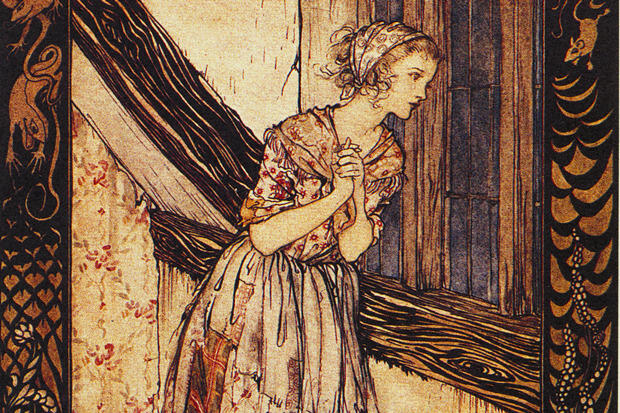
Sept. 8, 2014
Professor traces evolution of Grimm fairy tales, starting with 'Cinderella'
Share this story
When Jacob and Wilhelm Grimm first published their famous collection of fairy tales in 1812, the stories — including "Cinderella," "Sleeping Beauty" and "The Frog Prince" — were typically short, simple and often brutal versions of the folklore stories shared for generations across the German countryside.
As the Brothers Grimm's collection grew in popularity over the coming decades, however, the authors modified the text significantly, adding embellishment, lengthening the stories and making them somewhat more child friendly.
Now, a Virginia Commonwealth University professor is working to deepen our understanding of the fairy tales' evolution, from the initial 1812 edition up through the 1857 edition that was the final version published in the Grimm brothers' lifetime.
Robert Godwin-Jones, Ph.D., a professor of German and international studies in the College of Humanities and Sciences' School of World Studies, first launched his online database of Grimm fairy tales in 1994 as a resource for German language teachers and students.
"They've been used pretty extensively by German teachers throughout the United States and other countries as a resource," Godwin-Jones said. "It was one of the first websites that provided public access in digital form to these stories and other works of 19th-century German literature."

Over the summer, Godwin-Jones began to update the database — which features both German and English translations — starting with "Cinderella." He added additional versions of the text, annotations, high-resolution illustrations, a downloadable e-book version, audio versions of the German text and even a silent film version from 1922.
"My goal is basically to make these stories available to two targeted audiences — one is German language learners and teachers, and the other is the general reading public," he said. "I want to make them as accessible as possible."
Godwin-Jones is planning to update his database with a similar trove of new material for roughly 20 fairy tales. Up next, he said, will be "Sleeping Beauty" and "Snow White," and the update will include the stories' only recently discovered manuscripts from 1810.
For research, Godwin-Jones traveled in May to the libraries of Stanford University and University of California, Berkeley, both of which have extensive collections of 19th-century German literature. His trip was supported by a grant from VCU's Humanities Research Center.
"That [grant] allowed me to go back and find illustrated versions of the stories and scan the illustrations in high resolution," he said. "At Stanford University, in particular, I was able to find some rare versions of the stories that had illustrations I'd never seen before."
An online database of Grimm fairy tales is a natural fit for Godwin-Jones, as he is an expert in 19th-century German literature and has long been interested in language learning and technology.
He has also used the German-language stories as a tool in his classroom.
"You can do a lot with them pedagogically because they're such well-known stories. But mostly American students know the Disney versions which are very different from the original," he said. "So when they read, for example, in 'The Frog Prince,' that the princess actually doesn't kiss the frog, she throws him against the wall and tries to kill him, and then he turns into a prince and he crawls into bed with her. That's the original Grimm Brothers' version. There's a lot there you can talk about."

His students, he added, are often surprised at the stories' violence and sexuality — which are particularly prevalent in the early versions.
"[The Grimm brothers] collected these stories mostly from old women who would tell these stories to their grandchildren," Godwin-Jones said. "Early on, they thought they had to be chroniclers of those stories and felt they needed to be as faithful to the stories as possible. But then they discovered how popular the stories were, and how they were being used as stories for children, which was something new in the 19th century — this was sort of the beginning of children's literature — and so, realizing that, they made those stories more child-friendly as the years went on.
"’Cinderella,’ for example, has some gruesome stuff that happens at the end of the story that's toned down in the later versions of the stories. This project will show that."
Subscribe for free to the weekly VCU News email newsletter at http://newsletter.news.vcu.
Subscribe to VCU News
Subscribe to VCU News at newsletter.vcu.edu and receive a selection of stories, videos, photos, news clips and event listings in your inbox.








